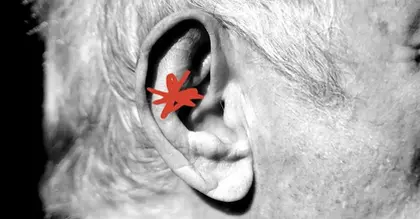- Researchers in the United Kingdom followed a group of older adults to assess how lifestyle habits influenced Health factors such as bone fractures and cardiovascular disease mortality.
- The researchers followed the adults, who were around age 65 when the study began, for 20 years.
- The researchers found an association between more prudent dietary choices and a slightly lower risk of bone fractures and heart disease mortality.
As adults reach mid-life and older age, fractures and heart disease become a higher concern. Older adults have a high mortality rate following hip fractures, and the leading cause of death in adults aged 65 and up is
With this in mind, researchers from the University of Southampton, in the United Kingdom, published a paper in Frontiers in Aging outlining their findings about associations between dietary choices and fractures and heart disease mortality in older adults.
After 2 decades of monitoring a group of participants, the scientists learned that people who made more “prudent” dietary choices were more likely to have lower risks in these areas.
Healthcare providers advise their patients on preventative measures, such as how to prevent osteoporosis and heart disease, especially in older age. Osteoporosis causes weak bones which can lead to an increase in fractures.
Since nutritional choices are an important aspect of maintaining health, researchers often look into whether current recommendations are still appropriate and adjust them when new evidence arises.
The new study looked into how a prudent diet and calcium intake affected bone fractures and heart disease mortality in the long run for older adults. Calcium is
The researchers described a prudent diet as “characterized by high consumption of fruit, vegetables, whole-grain cereals, and oily fish, with low consumption of white bread, chips, sugar, and full-fat dairy products.”
Nearly 3,000 older adults joined the study: 47% of the participants were women, and 53% were men.
At the end of the 20-year follow-up, 2% of men and 5% of women had a hip fracture during the study period; 22% of women and 9% of men had any type of fracture. For cardiovascular mortality, this occurred in 11% of men and 5% of women.
As far as prudent diet choices and hip fractures were concerned, the researchers found an association between the two. People who made better dietary choices overall had a slightly reduced risk of this sort of fracture.
When looking specifically at dietary calcium, this was not linked to a lower hip fracture risk, but the researchers did note it was associated with a protective benefit in regards to cardiovascular mortality.
The researchers also found that participants with more prudent diets were more likely to have higher levels of physical activity and less likely to have a smoking history.
Participants with lower levels of reported physical activity and a history of smoking had increased fracture and cardiovascular risks.
Cheng-Han Chen, MD, a board-certified interventional cardiologist and medical director of the Structural Heart Program at Saddleback Medical Center, spoke with Medical News Today about the study findings.
“As an observational study, it is unclear whether this association is causative, or it is confounded by other associated factors like physical activity and hypertension, which are more closely linked to the outcome,” Chen, who was not involved in this research, pointed out.
He also noted that “these long-term observational studies are useful in finding associations between multiple factors but less useful in determining actual cause and effect.“
Timothy Gibson, MD, a board-certified orthopedic surgeon and medical director of the MemorialCare Joint Replacement Center, also gave MNT his thoughts about the study.
Gibson, similarly not involve in the research, also emphasized that the study findings demonstrate only an association between prudent diet and fracture risk.
“The evidence from this type of study can show association but not necessarily causation,” commented Gibson. “It can still provide interesting educational information and help with public health guidelines.”
Gibson was surprised that the study did not find a stronger connection between adhering to a more prudent diet and a lower hip fracture risk.
“The dietary data was self-reported and probably one of the least stringent aspects of the study,” he pointed out.
John P. Higgins, MD, MBA, a sports cardiologist at McGovern Medical School at UTHealth in Houston, shared with MNT some dietary and lifestyle habits people can focus on as they age.
“There are several things you can do and eat that promote both heart health and bone health,” Higgins said.
For one, he suggested weight-bearing exercises for both bone and heart health.
“Walking, jogging, dancing, and weightlifting are excellent for both the heart and bones,” Higgins advised. “These activities help improve cardiovascular health while stimulating bone density, preventing bone loss.”
Higgins also suggested strength training and participating in stretching and balancing exercises.
Higgins made several dietary recommendations such as incorporating leafy, green vegetables:
“Kale, spinach, and collard greens are rich in vitamin K, calcium, and other nutrients that support bone health. They also have antioxidants that help reduce inflammation, which benefits the heart.”
People can also incorporate fatty fish, whole grains, legumes, nuts and seeds, and fortified plant milks for bone and heart health. Including dairy or foods high in calcium is also important.
“By combining heart-healthy foods with bone-strengthening activities, you can support both systems simultaneously,” Higgins advised.






